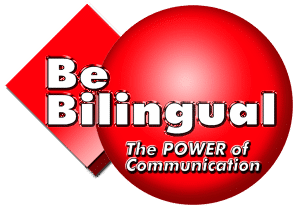[vc_row css=”.vc_custom_1645576246633{margin-right: 0px !important;margin-bottom: 0px !important;margin-left: 0px !important;border-right-width: 0px !important;border-bottom-width: 0px !important;border-left-width: 0px !important;padding-right: 0px !important;padding-bottom: 0px !important;padding-left: 0px !important;}”][vc_column width=”1/4″ css=”.vc_custom_1645717437287{margin-bottom: 0px !important;border-bottom-width: 0px !important;padding-bottom: 0px !important;background-color: #f44331 !important;}”][vc_column_text css=”.vc_custom_1664744889461{margin-top: 42px !important;margin-bottom: 0px !important;border-top-width: 0px !important;border-bottom-width: 0px !important;padding-top: 0px !important;padding-bottom: 0px !important;}”]10
October[/vc_column_text][/vc_column][vc_column width=”3/4″ css=”.vc_custom_1645717923888{margin-right: 0px !important;margin-bottom: 0px !important;border-right-width: 0px !important;border-bottom-width: 0px !important;padding-right: 0px !important;padding-bottom: 0px !important;}”][vc_column_text css=”.vc_custom_1645717981293{margin-top: 0px !important;margin-right: 0px !important;margin-bottom: 0px !important;border-top-width: 0px !important;border-right-width: 0px !important;border-bottom-width: 0px !important;padding-top: 50px !important;padding-right: 0px !important;padding-bottom: 0px !important;}”]
[/vc_column_text][/vc_column][/vc_row][vc_row css=”.vc_custom_1645575673571{margin-left: 0px !important;border-left-width: 0px !important;padding-left: 0px !important;}”][vc_column width=”2/3″ css=”.vc_custom_1645576154207{margin-top: 0px !important;margin-right: 0px !important;margin-left: 0px !important;border-top-width: 0px !important;border-right-width: 0px !important;border-left-width: 0px !important;padding-top: 0px !important;padding-right: 0px !important;padding-left: 0px !important;}”][vc_single_image image=”3945″ img_size=”full” css=”.vc_custom_1664745017959{margin-right: 0px !important;border-right-width: 0px !important;padding-right: 0px !important;}”][/vc_column][vc_column width=”1/3″ css=”.vc_custom_1645719409873{margin-top: 0px !important;margin-right: 0px !important;margin-bottom: 0px !important;margin-left: 0px !important;border-top-width: 0px !important;border-right-width: 0px !important;border-bottom-width: 0px !important;border-left-width: 0px !important;padding-top: 0px !important;padding-right: 0px !important;padding-bottom: 0px !important;padding-left: 0px !important;background-color: #f44331 !important;}”][vc_column_text css=”.vc_custom_1664745100021{margin-top: 0px !important;margin-right: 0px !important;margin-bottom: 0px !important;margin-left: 0px !important;border-top-width: 0px !important;border-right-width: 0px !important;border-bottom-width: 0px !important;border-left-width: 0px !important;padding-top: 35px !important;padding-right: 15px !important;padding-bottom: 0px !important;padding-left: 0px !important;background-color: #f44331 !important;}”]
THIS ISSUE
Which languages are easier to learn?
Upcoming Classes
[/vc_column_text][/vc_column][/vc_row][vc_row][vc_column width=”1/4″ css=”.vc_custom_1645628455871{margin-left: 15px !important;background-color: #f44331 !important;}”][vc_custom_heading text=”UPCOMING CLASSES” font_container=”tag:h4|text_align:center|color:%23ffffff” use_theme_fonts=”yes” css_animation=”fadeIn”][vc_column_text css=”.vc_custom_1645719522466{margin-top: 0px !important;margin-bottom: 0px !important;border-top-width: 0px !important;border-bottom-width: 0px !important;padding-top: 0px !important;padding-bottom: 435px !important;}”]
TWO STUDENTS FOR THE PRICE OF ONE
IN PERSON OR ZOOM
ONE-ON-ONEPRIVATE
IN PERSON OR ZOOM
10 (90-MINUTE)SESSIONS
$998.00
Choose your own schedule:
M-F
7:30am – 6:00 pm
SAT. 8:00am – 3:00 pm
FORM YOUR OWN GROUP -3 STUDENTS 10 (90-MINUTE) SESSIONS
$1,250.00
Choose your own schedule:
M-F
7:30am – 6:00 pm
SAT. 8:00am – 3:00 pm[/vc_column_text][/vc_column][vc_column width=”3/4″][vc_column_text css=”.vc_custom_1664745506123{padding-left: 15px !important;}”]When we choose to learn a new language, usually it is due to professional or business reasons, traveling or community/family relationship factors. However, what if we select a second language based just on the feasibility of learning?
Obviously, having the same alphabet and the same linguistic roots are two important factors to distinguish, but usually those are just common bases among several languages and a myriad of complex differences starts right then. For instance, English shares the same alphabet and roots with Germanic languages. It also shares Romance roots with Spanish, Portuguese and Italian, and even French.However, nobody can say that learning German, Spanish or French is easy. There is definitely a steep learning curve.
Then, what if we locate a language with a simple and clear grammar structure, and phonetic simplicity? Well, there are some : Dutch, Afrikaans and Indonesian.Dutch is spoken by more than 20 million people in the Netherlands, Belgium, Suriname, Aruba, Curacao and St Maarten. There are at least 1500 English words of Dutch origin, like: boss (baas), iceberg (ijsberg), waffle (wafel), butter (boter), cookie (koekje). There are similarities in compound words as well: werkplaats (workplace), wasmachine (washing machine), schoensmeer (shoe polish).Now take a look at these phrases: Hij is een goede man (he is a good man), Hallo, waar is de supermarkt? (Hello, where is the supermarket?), Pardon, dit is mijn station (Excuse me, this is my station).Needless to say, there are also differences, like the use of articles, the past tense of verbs and how they can compound not just words but a whole sentence into one long word.Afrikaans, a mix of Dutch, Bantu and Khoisan languages (with Malay influences) is spoken by about 17 million people in South Africa, Namibia, Botswana, Lesotho, Malawi, Swaziland and Zambia. It is considered a simplified variation of Dutch, therefore it has very similarities with it. For instance, the same phrases exemplified above, read as follow in Afrikaans: Hy is ‘n goeie man (Hij is een goede man), Hallo, waar is die supermark? (Hallo, waar is de supermarkt?) Verskoon my, dit is my stasie (Pardon, dit is mijn station).Furthermore, because English is an official language in South Africa, modern Afrikaans has English influence and vice versa.Both Dutch and Afrikaans have a long list of vowels and vowel combinations, as opposed to English. However, regarding noun’s gender, English and Afrikaans don’t have them (except for people) while Dutch does.
Indonesian (Bahasa Indonesia) is an Austronesian (or Malayo-Polynesian) language with influences from Malay, Javanese, Indian languages, Arabic, Dutch (it is a former Dutch colony) and many more.It is spoken by 35 million people in Indonesia, but also by about 135 million in other countries like the Philippines and Saudi Arabia. It is also very similar to Malay spoken in Malaysia, Singapore and Brunei. Indonesian is considered easier to learn because of its simple grammar structure, but there is definitely some initial difficulty to build up vocabulary due to the differences in root and word origin. Bahasa Indonesia does not use grammatical gender, the context or the addition of an adjective clarifies the message. The same applies for pluralization, when not clear by context, the word gets duplicated to indicate it.
Likewise, verbs have the same form regardless of person or tense, but the addition of adverbs (like yesterday, today, next year) and affixes help to convey the meaning.
While Dutch and Afrikaans have several words that are almost identical in English, Indonesian does not, but the English vocabulary has several words of Indonesian origin: orangutan, bamboo, rattan, ketchup, junk, gecko.
Having explained that, you may be thinking how beneficial learning those languages may be if you don’t have friends or business in those countries. In fact, for the person starting the process of learning a second language for the first time, the cognitive process and study experience (especially if the results are satisfactory rather quickly) can be very productive. This is because once you have acquired a second language, you actually know how to learn, what works for you and how the whole process works. This gives you a great advantage to start learning any other language and opens a path to explore and enrich your culture and your communication skills.[/vc_column_text][/vc_column][/vc_row]

